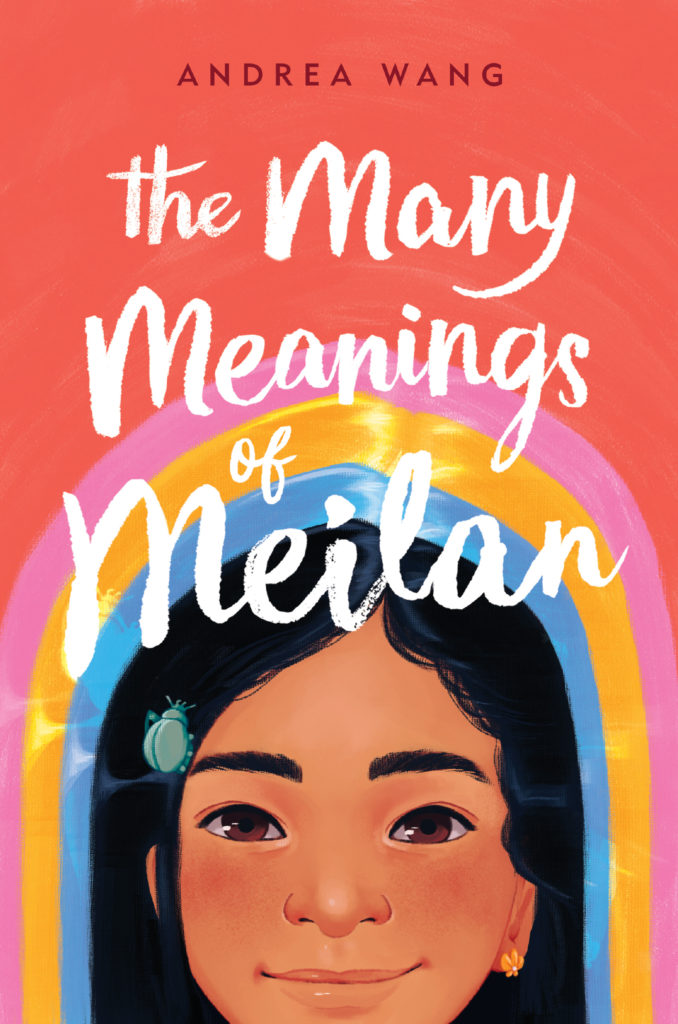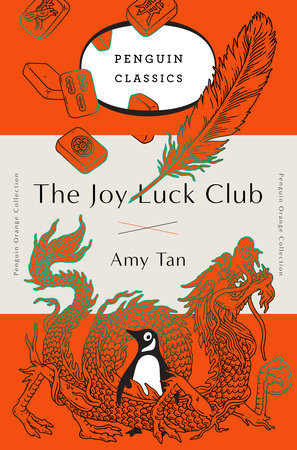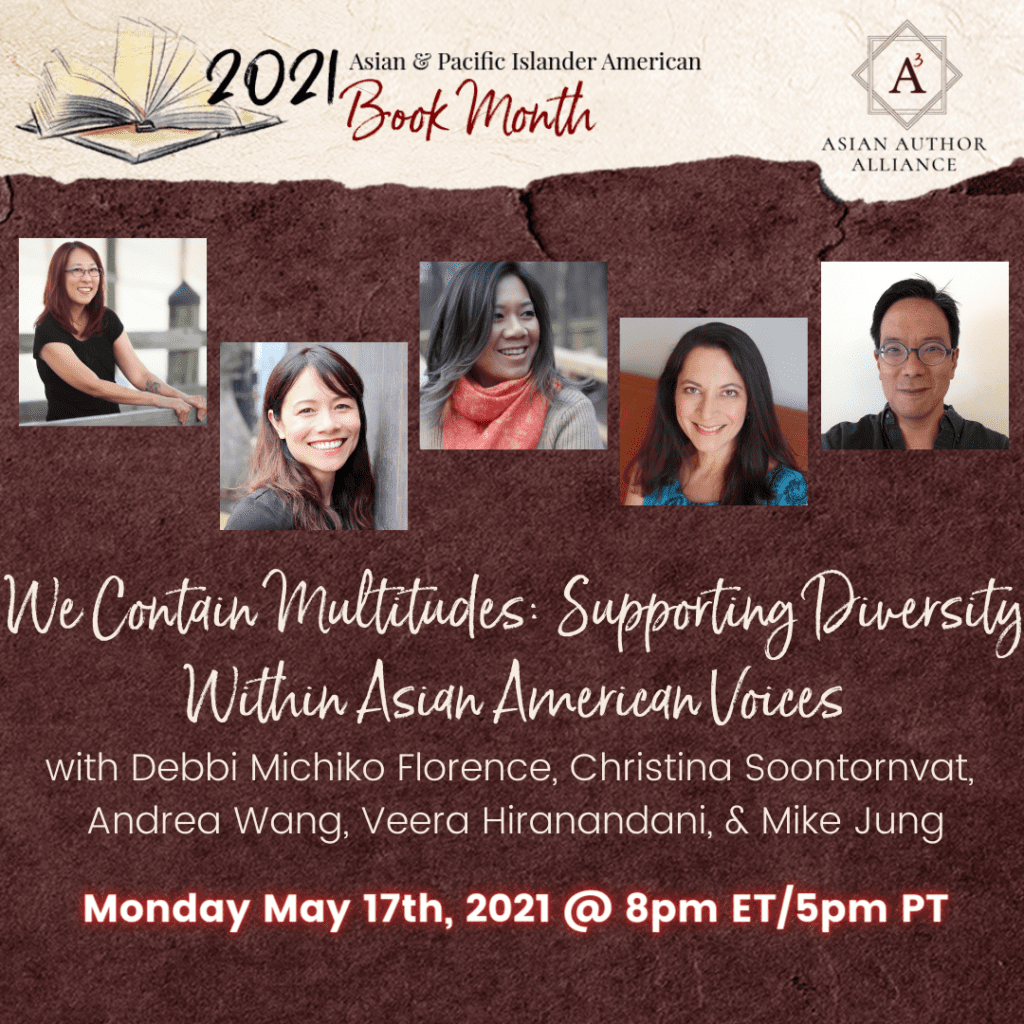At Cambridge Common Writers, we are immensely proud of our community members. In response to the recent increase in violence and hate speech directed towards Asian Americans and Pacific Islanders, we want to highlight the accomplishments of our Asian American and Pacific Islander alums. Our Spotlight series continues in celebration of AAPI Heritage Month — come get to know these very talented alums and learn about their writing lives.
ANDREA WANG — WFYP, JUNE ’11

Andrea Wang is the award-winning author of picture books The Nian Monster (Asian/Pacific American Award for Literature Honor), Magic Ramen (Freeman Book Award Honor), and Watercress (JLG Gold Standard Selection, seven starred reviews). The Many Meanings of Meilan, her debut middle grade novel, publishes in August 2021. Andrea’s work explores culture, creative thinking, and identity. She is also the author of seven non-fiction titles for the library and school market. Andrea holds an M.S. in Environmental Science and an M.F.A. in Creative Writing for Young People. She lives in Centennial, Colorado with her family.
Check Andrea out at our Bookstore!
Photo Credit: Elaine Freitas Photography
Why do you write and what do you like to write about the most?
I write for many different reasons: to help me process my own life, to explore ideas and moments in history that I’m interested in, and for the joy of creating worlds and characters. Right now, I like writing about culture and identity the most, to show young AAPI readers that they’re not alone; they are seen and understood. I want them to have the books I needed when I was a child.
Do you have any writing routines or traditions to help inspire creativity?
I have separate notebooks for picture book, middle grade, and YA ideas. It started with one notebook just for PB ideas when I began participating in Storystorm (formerly known as Picture Book Idea Month or “PiBoIdMo”), which was founded by author Tara Lazar. Then I started jotting down weird/funny/interesting things my sons told me when they were in middle school, and the MG idea notebook was born. And as they grew and moved into high school, it seemed natural to keep a notebook of YA ideas.
When I say ideas, I don’t mean fully fleshed-out plots or anything remotely like that. Often, they’re just bits of info, a quote, a cool setting for a scene, a character trait, etc. When I’m at a point where I’m trying to start a new project, I’ll flip through these notebooks and see if anything sparks my imagination. My next picture book, Luli and the Language of Tea, is based on an idea I wrote during PiBoIdMo 2017. It says, “Tea: PB with kids of all different races coming together to drink tea at a tea party. They all have different (or sometimes similar) words for tea in their own language, but they all understand what it means.” Nothing earth-shattering. Not even all that interesting. But with an unusual structure and setting, it became a fun story. For my upcoming novel, The Many Meanings of Meilan, I compiled a bunch of snippets from my notebooks and merged them together to create characters, scenes, and plot points. And simply re-reading my idea notebooks can often get my creative juices flowing!
What is one book you wish you had written?
I admire Amy Tan greatly and wish that I’d written The Joy Luck Club. Eight points of view and eight interconnected stories – what a feat! Not only was it an incredible achievement from a craft perspective, but for me and many AAPI, The Joy Luck Club was the first time we had seen ourselves represented in an honest, authentic way. Tan inspired me to write my truth, and I hope that my books will inspire others to do the same.
What is something that tends to get in the way of your writing and how do you overcome it?
I admit to not being good at following routines. I also tend to get distracted by administrative tasks. I always think it will only take a few minutes to respond to an email, or send an author visit contract, or pay a bill, and invariably it takes much longer! For long-term writing goals, I try to set deadlines for my WIPs. For short-term goals, I have tried using the Pomodoro Technique to keep myself focused on writing, which works when I can make myself do it consistently. Instead of setting daily word count goals for myself, I’ll measure my progress that day in scenes or chapters. What has been working best of all is to have an accountability partner – who, in my case, is a good friend who is also a KidLit author. We check in with each other every day and tell each other what we’re planning to work on, and report back throughout the day on the progress we’ve made. We also talk about our goals for the week. Somehow, just stating my writing intentions to another person makes me feel like I can’t let them down by not reaching my goals, even if there aren’t any real consequences.
Which parts of the Lesley MFA program do you miss, now that you’re writing on your own time?
It’s safe to say that I miss all of it. Really, even the craft annotations and the cafeteria food. I actually love analyzing books and despise the never-ending drudgery of cooking. I miss the feedback from and wonderful chats with my mentors, and no matter how many webinars and workshops I attend, it’s never quite the same as spending full days learning from Lesley faculty. Most of all, I miss the community of vibrant, like-minded people!
If you could get coffee with any writer (dead or alive) who would it be and why?
I had the good fortune to hear Margaret Atwood and Elizabeth Gilbert in conversation some years ago, and I would be thrilled to have coffee with either of them, but especially Margaret Atwood. She is sharp and witty, and her books are amazingly complex and prescient.
Tell us a fun fact about yourself that doesn’t have to do with writing.
It feels wrong to call it “fun,” but I am a little obsessed with true crime and solving mysteries. I haven’t yet tried to solve a real cold case, but I enjoy playing Hunt a Killer, “an immersive mystery game.” Each month I receive a box with clues, police reports, ciphers, and even physical items that relate to the ongoing murder mystery. My older son and his girlfriend play with me, and it’s been a good distraction during the pandemic.
What are you working on now?
I’m excited to share that my debut middle grade novel, The Many Meanings of Meilan, comes out in August 2021 from Kokila/Penguin Young Readers. Like my newest picture book Watercress, Meilan is also a story about a young Chinese American girl who ends up in Ohio, trying to understand where she fits into the world. I’d love for folks to attend a panel I’m participating in with other AAPI MG authors, hosted by the Asian Author Alliance as part of their AAPI Book Month celebration. The schedule of panels is being shared on social media from the @Asian_Authors Twitter and IG accounts as well as on their website. I’ll be chatting about The Many Meanings of Meilan in a panel entitled, “We Contain Multitudes: Supporting Diverse Diversity Within Asian American Voices,” on May 17, 2021 @ 8 PM ET.
My next picture book is called Luli and the Language of Tea and it publishes in 2022 from Neal Porter Books/Holiday House. It’s about how the word for tea in countries all over the world stem from the Chinese word for it, and how a little Chinese girl bridges a language gap with it to make new friends. Luli will be illustrated by the wonderful artist Hyewon Yum. While I wait for those books to release, I’m working on another middle grade novel and two nonfiction picture books that I can’t say anything about yet.







Comments are closed